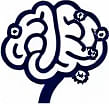The Design Thinking Process and Its Role in Mental Models
 by Shanie Goodwin
by Shanie Goodwin
The design thinking process offers a structured approach to innovation and problem-solving, drawing from mental models to foster creativity and practical solutions. By breaking down its key stages, individuals can apply this method in various fields like psychology and business for better cognitive outcomes.

The design thinking process serves as a valuable mental model for approaching challenges with creativity and logic. This method helps individuals and teams generate innovative solutions by focusing on human needs and iterative refinement.
At its core, the design thinking process involves a series of steps that encourage empathy and experimentation. For instance, the first step is to empathize with users, gathering insights into their experiences to inform better decisions. This stage sets the foundation for effective problem-solving in everyday scenarios.
Following empathy, the process moves to defining the problem clearly. This involves synthesizing information to identify core issues that need addressing. By doing so, people can avoid superficial fixes and aim for meaningful changes.
Next comes the ideation phase, where brainstorming generates a wide range of ideas. Participants explore possibilities without immediate judgment, allowing for diverse perspectives to emerge. This step promotes innovation by encouraging out-of-the-box thinking.
Once ideas are generated, the process shifts to prototyping. Here, concepts are turned into tangible forms, such as sketches or models, to test feasibility. Prototyping allows for quick feedback and adjustments, making it a practical tool in development work.
The final stage is testing, where prototypes are evaluated in real-world conditions. This iterative loop ensures that solutions are refined based on actual user responses, leading to more effective outcomes.
Applications in Psychology
In psychology, the design thinking process acts as a mental model for understanding human behavior. Therapists might use it to empathize with clients, defining their emotional challenges before ideating coping strategies. For example, cognitive behavioral therapy often incorporates similar elements to address thought patterns.
This approach enhances self-awareness and emotional intelligence. By applying design thinking, individuals can reframe negative experiences, turning them into opportunities for growth. Studies show that such methods improve mental resilience over time.
Business Strategies and Design Thinking
Business professionals find the design thinking process useful for strategic planning. It helps in identifying market needs and developing products that meet those demands. Companies often use this model to streamline operations and boost efficiency.
For instance, in product development, teams define customer pain points and ideate solutions accordingly. Prototyping new features allows for testing before full launch, reducing risks and costs. This method has been adopted by many organizations to drive innovation in competitive markets.
Cognitive Development Through Design Thinking
For lifelong learners, the design thinking process supports cognitive growth by promoting critical thinking and adaptability. It encourages exploring multiple viewpoints, which strengthens problem-solving skills.
Children and adults alike can benefit from this mental model in educational settings. Teachers might guide students through the stages to tackle complex projects, fostering a mindset of continuous improvement. Over time, this builds confidence and creativity.
Real-World Examples
Consider how startups apply design thinking to launch successful ventures. They begin by empathizing with potential users, defining market gaps, and ideating unique offerings. Prototyping minimum viable products leads to testing and iteration, often resulting in refined business models.
In healthcare, practitioners use similar processes to improve patient care. By defining specific health issues, they ideate interventions and test them through trials, leading to better treatment options.
Benefits of Integrating Design Thinking
Integrating this process into daily life offers numerous advantages. It cultivates a proactive attitude towards challenges, turning obstacles into learning experiences. Users report higher satisfaction from solutions that are user-centered and adaptable.
Moreover, it encourages collaboration among diverse groups, blending ideas from different backgrounds. This inclusivity leads to more comprehensive results and shared success.
In summary, the design thinking process stands out as a versatile mental model that enhances decision-making across various domains. By following its steps, individuals can achieve more innovative and effective outcomes, supporting personal and professional growth.
To maximize benefits, practice regularly through simple exercises. Start with a small problem, work through the stages, and reflect on the results. This hands-on approach solidifies the process as a key tool in your cognitive toolkit.
